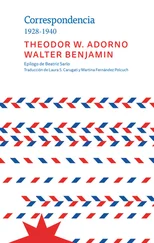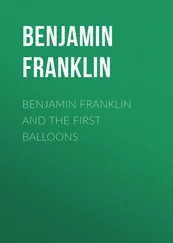There are many cases of collector fraud, including the private and state exploitation of stamp collectors, that do not involve forgery. Above all there are the countries that, so to speak, live off the postage stamp trade. In earlier times especially, quite a few smaller states relied on the deep pockets of stamp collectors to improve their finances. The discovery of this peculiar source of income can be credited to an inventive resident of the Cook Islands. Not long ago the 10,000 to 12,000 inhabitants of this island were cannibals. Along with the first objects and tokens of civilization to reach these people came postage stamps ordered from New Zealand. They were very simple stamps, made of gummed paper outlined in block letters. Nevertheless, the big stamp dealers in America and Europe took great interest in these editions and paid handsomely for them. No one was more surprised than the people of the Cook Islands when such an easy and lucrative source of income suddenly presented itself. They immediately printed new sheets of stamps in Australia, which were different from the first ones in design and color. There are similar stories from many South American countries, especially Paraguay, and even from the little Indian principalities of Faridkot, Bengal, and Bamra. Even shrewder than the sovereigns who profited in this way were private individuals, like the engineer who delivered two million new stamps to Guatemala for free, in return asking only for all the series of old stamps that could still be found in the state printing office. It’s not hard to imagine how much money he would later make from selling them. When things were going badly for Germany at the end of the war, even the German Reichspost followed the example set by these exotic kingdoms and principalities, and quickly sold their supplies of colonial stamps to private collectors.
Shall I now tell you an entirely different sort of swindle story, not directly related to stamp collecting? It’s one of the cleverest you could ever imagine. And it centers around a stamp collection, so maybe I’ll chance it. The story takes place in Wilhelmshaven in 1912. A well-to-do resident of the city sold his beautiful stamp collection, compiled over years of hard work, to a gentleman in Berlin for 17,000 marks and sent it cash-on-delivery. In the meantime the buyer had sent a crate, allegedly filled with books, to the man in Wilhelmshaven. Shortly afterwards he telegraphed to have this crate sent back to Berlin. Both crates arrived safely at the Berlin freight office. The swindler then succeeded in claiming the crate holding the stamp collection, without paying the cash due, by passing it off as the crate he himself had sent. The crate allegedly filled with books contained only scraps of paper, and the Berliner disappeared without a trace.
So much for postage stamp fraud insofar as the stamp collector is concerned. There is another, much greater entity with a vested interest in postage stamp fraud, and especially in counterfeit stamps: the post office. Each year the postal service sells roughly 6 billion stamps, that is, 6,000 million; worldwide, the total is 30 billion. This works out as people in Germany annually spending around 5 billion marks on stamps. Therefore, each year the postal service makes and sells 5,000 million marks worth of small paper money, if you will. Postage stamps can be thought of as small bank notes, as they’re used not only to send letters, but often for payments up to a certain amount. In fact, stamps differ from paper money in one single way: printing counterfeit ten-mark or 100-mark notes requires tremendous knowledge and skill, as well as expensive and complicated equipment; whereas reprinting postage stamps is extraordinarily simple, and the rougher the original print, the more difficult it is to distinguish it from a forgery. A few years ago it so happened that several German ten-pfennig stamps were declared counterfeit by some very experienced stamp collectors, while the Reichspost was of the opinion that they were genuine. The frequency of this kind of stamp forgery — why not call it “banknote counterfeiting,” as the law punishes it just as harshly — is hard to determine, because the postal service keeps an annual tally of the millions of marks it earns selling stamps, but doesn’t record the values of the many millions of stamps it postmarks each year. There are people who claim that the postal authorities lose hundreds of millions of marks annually through fraud. As mentioned, this can’t be confirmed, but if one considers that the post office can be bilked even more easily than through counterfeit stamps, that is, by cleanly removing a stamp’s postmark, there’s no reason to doubt this claim. Some even maintain that there is a predilection for certain types of swindle depending on the region. For example, large-scale printing forgery seems most prevalent in Southern Europe, while washing and cleaning stamps on a smaller scale is more popular in the North. I’m telling you all this because what these people are driving at concerns all stamp collectors. They want to abolish stamps and replace them with simple postmarks. You’ve probably all noticed that postmarks, not postage stamps, are already in use for bulk mail. Enemies of the postage stamp think this procedure should also be used for private mail, which would require the automation of mailboxes. There would be five-, eight-, fifteen-, and twenty-five-pfennig mailboxes and so on, a different box for each amount of postage demanded for a letter. For the mail slot to open, the sender would first need to insert the corresponding amount in coins. But this idea is still fresh and quite a few obstacles remain, especially the fact that the Universal Postal Union acknowledges only stamps, not postmarks. However, the age of mechanization and technology will most probably spell the end of the postage stamp. Those of you eager to prepare for this eventuality would be wise to think about how to put together a postmark collection. We can already see how postmarks are becoming more and more diverse and intricate, even showing advertisements with words and pictures, and to win over stamp collectors, the enemies of the postage stamp have promised that postmarks will be adorned with historical images, coats of arms, etc., just like before with stamps.
“Briefmarkenschwindel,” GS, 7.1, 195–200. Translated by Jonathan Lutes.
The precise date of broadcast for this text has not been determined. It was most likely written during the second half of 1930. A catalog, found in the Benjamin archive, of an exhibition entitled “Die Alt-Berliner Post” [The Mail in Old Berlin], which took place between May 23 and August 3, 1930, suggests the end of May as the earliest “Postage Stamp Swindles” could have been created.
Schiller-Lerg speculates that “Postage Stamp Swindles” might have been broadcast from Berlin on January 16, 1931, a date for which the Funkstunde announced an untitled broadcast by Benjamin ( Walter Benjamin und der Rundfunk, 165).
1Benjamin refers to three stamp catalogs and reference works of the period: Senfs Illustriertes Briefmarken Journal, Michel Briefmarken Katalog, and Paul Kohls Briefmarken Handbuch.
2The German mistakenly gives 1778 as the date here. The La Renotière collection, owned by Philipp Ferrari de la Renotière (1850–1917), was bolstered by his 1878 purchase of the one-cent stamp, “Black on Magenta” of British Guiana. This stamp was valued in 2014 at $20 million.
3A work with this title by Paul Ohrt has not been found. Ohrt is the author of Handbuch aller bekannten Neudrucke [Handbook of All Known Reprints] (1906–1938).
CHAPTER 21. The Bootleggers
Bootleggers — we’ll hear a bit later about the literal meaning of this word. The radio gazette was right to add “or the American alcohol smugglers” to its program announcement, otherwise you would have had to ask your parents. 1They know what sort of people bootleggers are; they’ve recently read a lot about the infamous Jacques Diamond, the rich bootlegger who fled to Europe to escape his enemies, but was arrested in Cologne and shipped back to America. Perhaps the few adults who have wandered into this show for children are interested in such people, these smooth customers who are always on the run. And maybe they’re interested in something else, too, such as the question: Should children even hear these kinds of stories? Stories of swindlers and miscreants who break the law trying to make a pile of dough, and often succeed? It’s a legitimate question. It would weigh on my conscience if I were to sit here and fire off one tale of villainy after another without first saying a few words about the laws and grand intentions that create the backdrop for the stories in which alcohol smugglers are heroes.
Читать дальше












